The elementary school I attended was named after the Devonian rock formation, and the other schools in town were similarly named after oil-bearing strata. During the summer, we watched the Midland RockHounds (West Texas slang for the geologists who hunt for crude) play minor-league baseball. The team logo featured a dog wearing a hard hat while derricks squirted oil behind him. I remember on one of our drives home from Midland, Mom and Dad talked quietly about how none of the pumpjacks that lined the highway were moving. Even as a kid, I knew that when those metal heads weren’t bobbing up and down, something was wrong.
Of course, I had no notion of how geopolitics affected the fortunes of my town—how an attempted coup in Venezuela could make it harder for a local family to put food on the table. But my friends and I grew accustomed to hearing adults discuss the price per barrel of West Texas Intermediate the way folks elsewhere might talk about the weather, and soon what those figures meant was not lost on us. We grew up on stories about former boom times, how the money had flowed like a flash flood in a desert arroyo. We had also heard about the horror of the crash: tales of men killing themselves in the patch after losing it all.
In 2004, the summer before my sophomore year of high school, the price per barrel of WTI ticked up to more than $40 for the first time since the mid-eighties. Like farmers celebrating the arrival of storm clouds in a drought, West Texans rejoiced. The upward trend continued for the next four years until sweet crude peaked at an all-time high of $145.29. Around this time, there was a paradigm shift in the industry. Because the profit margins were so high, oil companies could afford to use hydraulic fracturing (or fracking) and horizontal drilling techniques to tap into the vast quantities of oil that had been previously locked in porous shale formations. The shale boom was on.
In 2012 stories of the boom reached me while I was attending grad school in Ireland. I had racked up student debt, so I decided to return home and earn some money in the oil patch. I spent 2013 working for Josh’s dad’s oil company in Andrews. My duties included hauling parts to far-flung locations and roughnecking on a pulling unit (essentially a smaller drilling rig used to work on wells that have gone off-line). I made a good dent in my loans that year, but after a few close calls on the rig and a few too many eighty-hour workweeks out in the elements, I eagerly traded in my OSHA-required steel-toes for a pair of civilian cowboy boots.
In January 2015, the price of oil sank to $44 a barrel, less than half of what it had been a year before. It seemed as if the mighty shale boom had fizzled out. Purse strings across West Texas tightened, and by December 2016 more than one hundred American oil and gas companies, almost half of them based in Texas, had filed for bankruptcy. Some workers who had come to the region seeking their fortune ended up abandoning their vehicles at the Midland airport before they boarded flights back home. It seemed as if the Permian Basin had seen its last big hurrah. Then something happened that hadn’t been seen in the region’s long history of boom-and-bust cycles.
Despite relatively deflated oil prices, drilling in the Permian began to pick back up. Technological improvements were one reason; fracking and horizontal drilling became more efficient. Today, some experts estimate that oil could drop to as low as $33 per barrel and sinking new wells in the Permian would still be profitable, a scenario that would have been unimaginable a few years ago. Another factor was the end of a forty-year embargo on crude exports, signed by President Obama in December 2015. Permian production has since rocketed from two million barrels a day in 2016 to four million in March of this year. Over the next four years, industry experts expect the output to double again.
The Permian now has a legitimate claim to being the world’s most productive oil field, outpacing even the Ghawar Field, in Saudi Arabia. As a result, America has neared its long-sought goal of energy independence. Last November marked the first time in 75 years that the country exported more crude oil and other petroleum liquids than it imported, a milestone that’s been lauded by officials from Austin to Washington, D.C. In April, Vice President Mike Pence toured a drilling rig outside Midland and told the small crowd, outfitted in hard hats, “Thank you for setting the pace for American energy dominance.”
The benefit of this boom to actual West Texans, however, is less clear. As I crisscrossed the Permian recently, I heard the same concerns echoed over and over again, at my family’s dining room table, in the halls of county courthouses, at backyard barbecues, and in cafes across the region.
Booms are, by definition, explosive—a sudden blast of activity that can take a community by surprise. Even in the Permian Basin, which has weathered these cycles for nearly a century, a boom of this magnitude is impossible to prepare for. And while it has brought opportunity, it has posed serious challenges. Whether the rewards outweigh the repercussions . . . well, that depends on who you ask.
Most West Texans are grateful for the recent uptick—making a good living in the dusty Permian has never been easy—but even so, locals are faced with a host of new concerns. For one, the cost of living has inflated so quickly that, for many residents, it has outpaced the gains. Those without jobs in the oil patch are especially hard-hit, and industries outside the oil field face severe staffing shortages: Dumpsters overflow without garbage truck drivers to empty them. Students are late to class because there aren’t enough bus drivers to pick them up. Law enforcement is stretched thin while crime rates—drug use, sex trafficking, theft—rise along with the influx of temporary laborers. Hospitals are short on physicians. Schools can’t keep enough teachers in their classrooms.
And there are other very real concerns: driving on the highways alongside gigantic tankers and equipment haulers can feel like a suicide mission. Even some of those who are fiercely pro-oil have grown worried about the strain on the region’s limited natural resources—especially water—and the environmental toll of the proliferation of sand mining, the flares burning methane and benzene, and all the trash that litters the region.
Though Texas and the U.S. will reap serious profits from the sweat poured into the Permian, what lasting benefit will the region have to show for all of this when the boom ends?
Shawna Granado was born and raised in Odessa. She was nineteen when she took a job as a waitress at the Pioneer Cafe, a tin shack planted on a desolate stretch of highway some 25 miles northwest of the city. Despite its remote location, everyone who spent time in that part of the patch (mostly men working on wells or at the nearby compressor station) knew the Pioneer Cafe at Turnbaugh Corner. The T-junction got its name from “Ma” Turnbaugh, who opened the Pioneer in 1937 and lived for years in a one-room house behind it. The restaurant was never much to look at, but it was the only place serving hot meals and cold beer for miles. When Ma died, in 1969, one of the waitresses took over the business. Eventually that woman passed it down to one of her longtime servers, and so it went for years until Shawna, having worked there for nearly a decade, continued the tradition and bought out the business with her parents in 2010.
“We were booming when I bought it,” she told me as we sat at a Mexican joint in Odessa, her arms decorated with bright tattoos and her hair dyed a vibrant shade of red. At 6 a.m., when the Pioneer opened, the day crews came in hungry for breakfast, while the graveyard “tower” (a West Texas bastardization of “tour”) stumbled in after their overnight shift. “You can’t legally sell alcohol until 7 a.m. in Texas,” Shawna said, “so the guys would literally sit there and watch the clock. Come 7:45, you’d think there was a party rockin’ and rollin’ in there. Some guys would just be barely waking up, eating their eggs. And others are knocking back a twelve-pack.”
I witnessed a few of these early mornings during my tour in the patch in 2013. Anytime I had work in the area, I’d go out of my way to stop at the Pioneer, sometimes for a bite and other times just to sit with a mug of coffee, dwelling in the atmosphere of the place. There was always a group of men darkened by the sun plowing through plates of smothered burritos, chili, hash browns, or chicken-fry.
The 2014 oil downturn abruptly deflated the cafe’s bustling business, but Shawna held on. The Pioneer had weathered busts for nearly eight decades, and she wasn’t going to let it fail on her watch. One by one she had to lay off her staff; eventually she had to let her own sister go. It came down to just Shawna and the cook. Shawna began to eat through her savings. “I don’t think I paid myself for the last eight months,” she said. “I made dinner to take home to my family every day. That was one way of surviving, paying myself with food.” In April 2017 the Pioneer Cafe turned eighty years old. Shawna celebrated the milestone by hosting a party at the cafe. The few regulars who were still around came out to reminisce about the late-night jam sessions, the countless card games, and that one time patrons kept tossing back beers while a tornado touched down just outside. (“I guess we’ll all go down together—or up,” Shawna told them.) Six months later, she locked the doors to the Pioneer for the last time.
Shawna, who’s now 36 and married with a 12-year-old son, is working as a waitress again, at a little cafe outside Midland that serves home-cooked meals. She enjoys seeing some of her old customers who are back to work now. She’s glad that things have picked back up, but she’s also well aware of the negative repercussions.
“The price of living is outrageous,” she said. “Luckily, we own our house, but I have friends who don’t. I’ve got one friend who’s making, like, twenty-something dollars an hour and struggling, not knowing how he’s going to pay for a one-bedroom apartment.” Practically everyone in the Permian knows someone in a similar situation. In March of this year, the website Apartment List reported that the average monthly rent for a one-bedroom apartment in Odessa was $1,267—higher than in Austin, San Antonio, Houston, and Dallas. And it’s not just rent that’s gone up; groceries and other basic goods have spiked as well. Ironically, a gallon of gas is more expensive in the Permian Basin than at pumps in other parts of the state. “I don’t necessarily see how it balances out,” Shawna said. “People are out there busting their ass and risking their lives on the oil rigs. And, yeah, they’re banking, but unless they’re living in a man camp, they’re just breaking even. It’s all for nothing.”
Like so many West Texans, myself included, Shawna is proud to be from this scrubby, stinky patch of oil-rich dirt. But the whiplash of boom and bust takes its toll. “I feel like everyone’s goal—I mean everyone born and raised here—is to get out of this town,” she said. The latest boom has transformed Odessa into something she doesn’t recognize, with its clogged roads and rising drug abuse. “We’re a small town with big-city problems now,” she said. Shawna and her husband have considered leaving the Permian. He’s thinking about San Antonio. She’s leaning toward Austin.

Shawna Granado outside the now-shuttered Pioneer Cafe at Turnbaugh Corner, northwest of Odessa.
One Friday night a few days after the Oil Show, I drove over to watch the Odessa High Bronchos—the lesser-known sibling of the Permian High Panthers (of Friday Night Lights fame)—take on the Midland Lee Rebels. It was a weird sensation, driving up to Ratliff Stadium, on the outskirts of Odessa. The last time I had been there, I was suited up on the field. That was more than a decade ago. Driving through the parking lot, the long-touted stereotype about Midland being the wealthy white-collar town and Odessa its working-class counterpoint held true: brand-new SUVs filled the Midland side, while Odessa’s half was marked by older work trucks with pipe racks welded to their sides.
Like many school districts across the Permian Basin, those in Midland and Odessa have struggled to address staff shortages and record-breaking enrollment brought on by the boom. Odessa’s Ector ISD, for example, started the school year with 240 vacant positions. One educator was left with the unenviable mission of teaching precalculus to 63 high schoolers in a single classroom. Permian High, built to accommodate some 2,500 kids, has a current enrollment of 3,600 students and is expected to add hundreds more in the next few years. Some classrooms don’t have enough desks and chairs. One English teacher resorted to buying Home Depot buckets for her students to sit on. Poor test scores have pushed Region 18, which includes most of the Permian Basin, to the bottom of the state rankings. And while teachers leave for higher-paying jobs in the oil field or abandon the patch for more affordable cities, the districts struggle to recruit replacements. Both Ector and Midland ISDs have considered adding virtual classes.
Public schools in Texas get most of their revenue from property taxes, and during a boom, property values tend to increase exponentially—in Midland, average home prices rose by $50,000 from 2017 to 2018. But thanks to the state’s recapture policy (popularly known as Robin Hood), the windfall doesn’t necessarily benefit local schools. This year, Andrews ISD, which serves my home county of 18,000, sent more than $12 million to Austin to be redistributed to other schools.
Yet during the game, these concerns seemed to be on hold. One of the Midland Lee players chased his father’s legacy on the turf. From the bleachers, parents hollered at their boys, “Hit ’em hard, mijo!” The air was cool and smelled of Frito pie. I went to the concession stand at the half for coffee. The cashier handed me a Styrofoam cup with the name of a local oil field company stamped on the side. I remember hearing in high school that Southlake Carroll High, north of Fort Worth, would be serving sushi in its new multimillion-dollar stadium. At the time I’d never seen sushi. There were some folks, including Friday Night Lights author Buzz Bissinger, who decried the new concession as a sign that Texas high school football had “gone soft.” That was one thing we never had to worry about in West Texas.
In the second half, the Bronchos, nearly always the underdogs in their area matchups, started to fall behind. As the score grew more lopsided late in the third quarter, I decided to file out with some of the dejected Odessa fans. I took one more look at the dark prairies surrounding us from the top of the stadium. Not too far off were tall towers of light, each one shining like some kind of holy pillar—drilling rigs. Out there I knew there were roughnecks working for the money that had built this stadium, that had paid for the logo on my Styrofoam cup. And out there somewhere was a father missing the game.

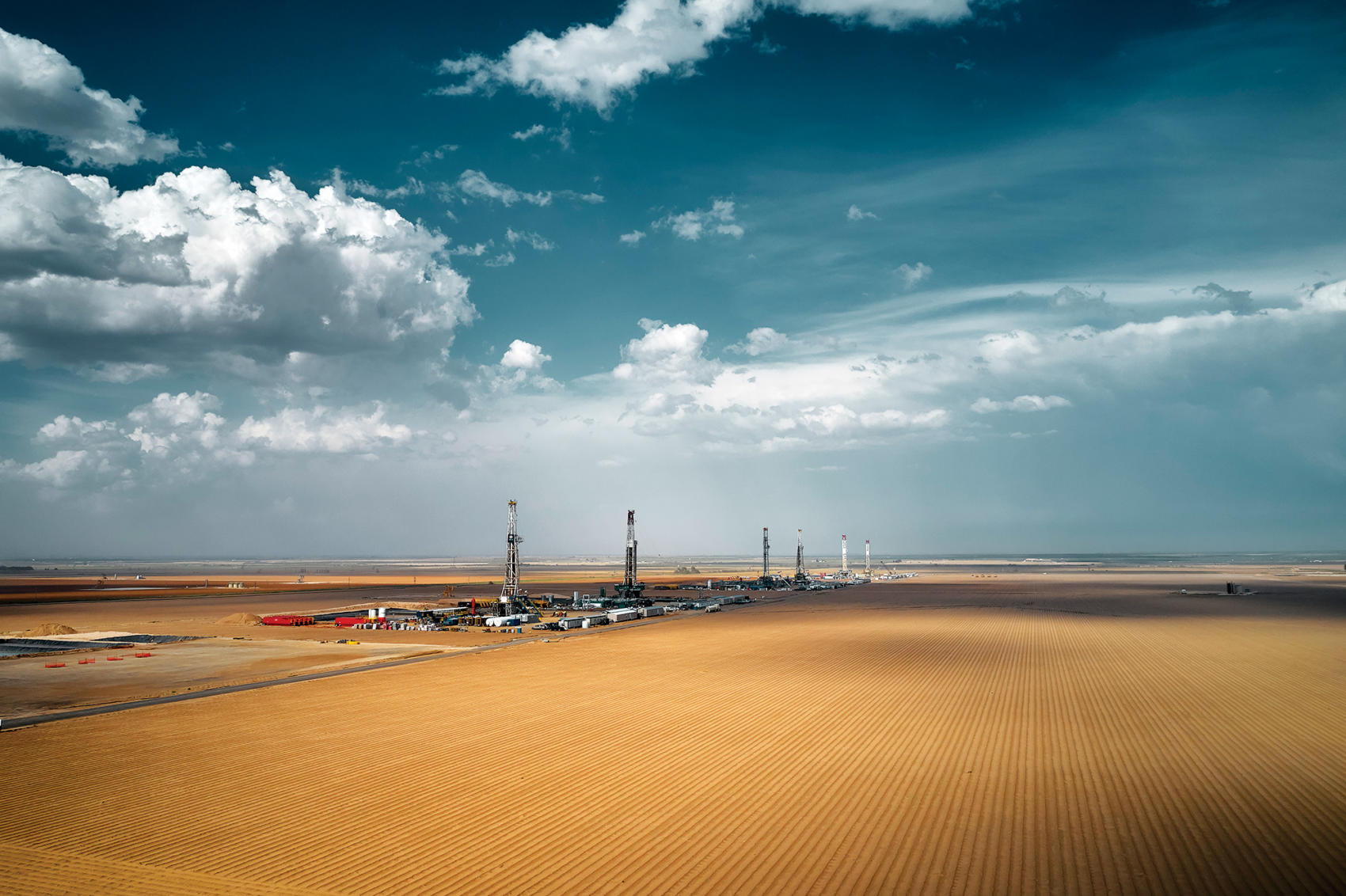
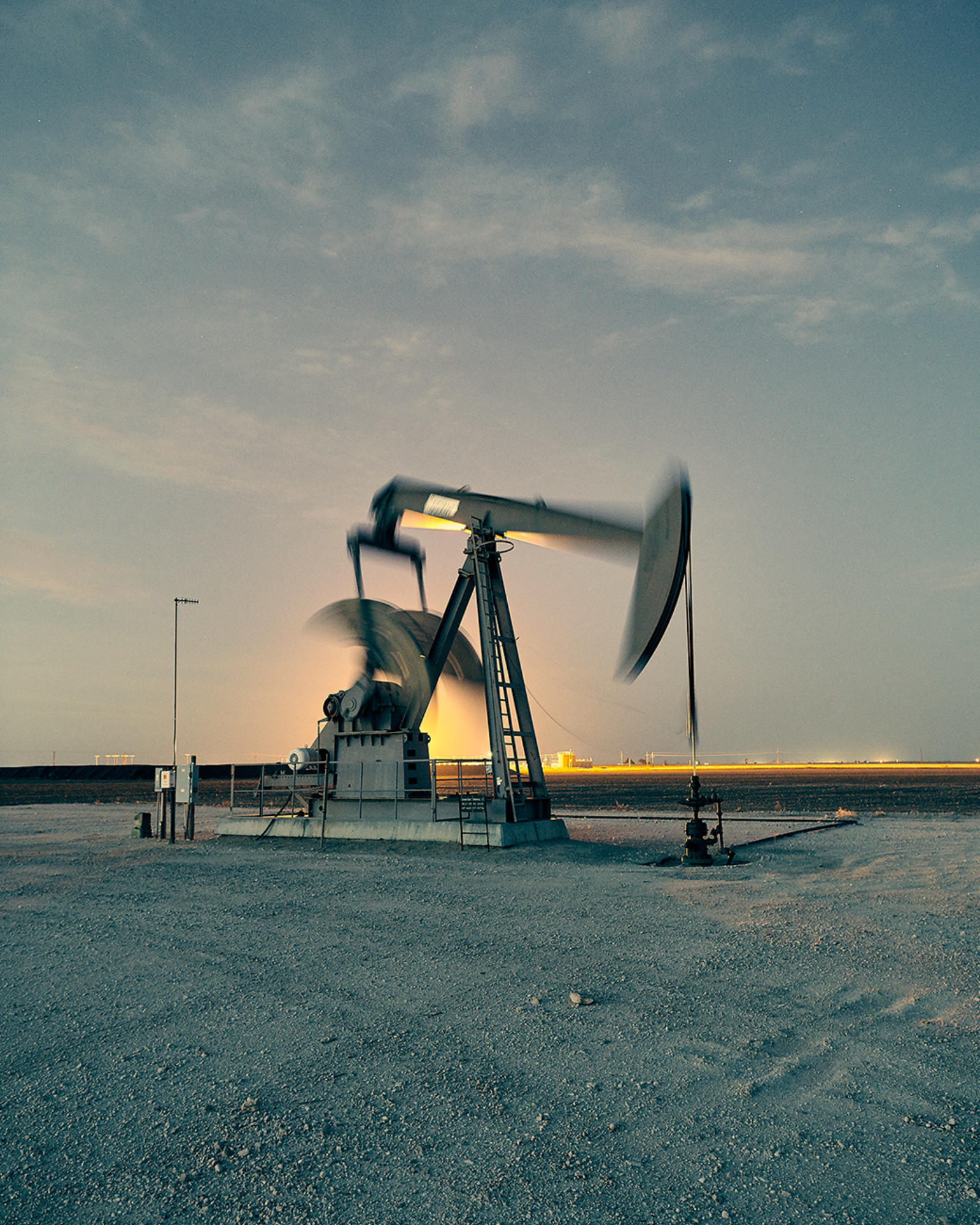
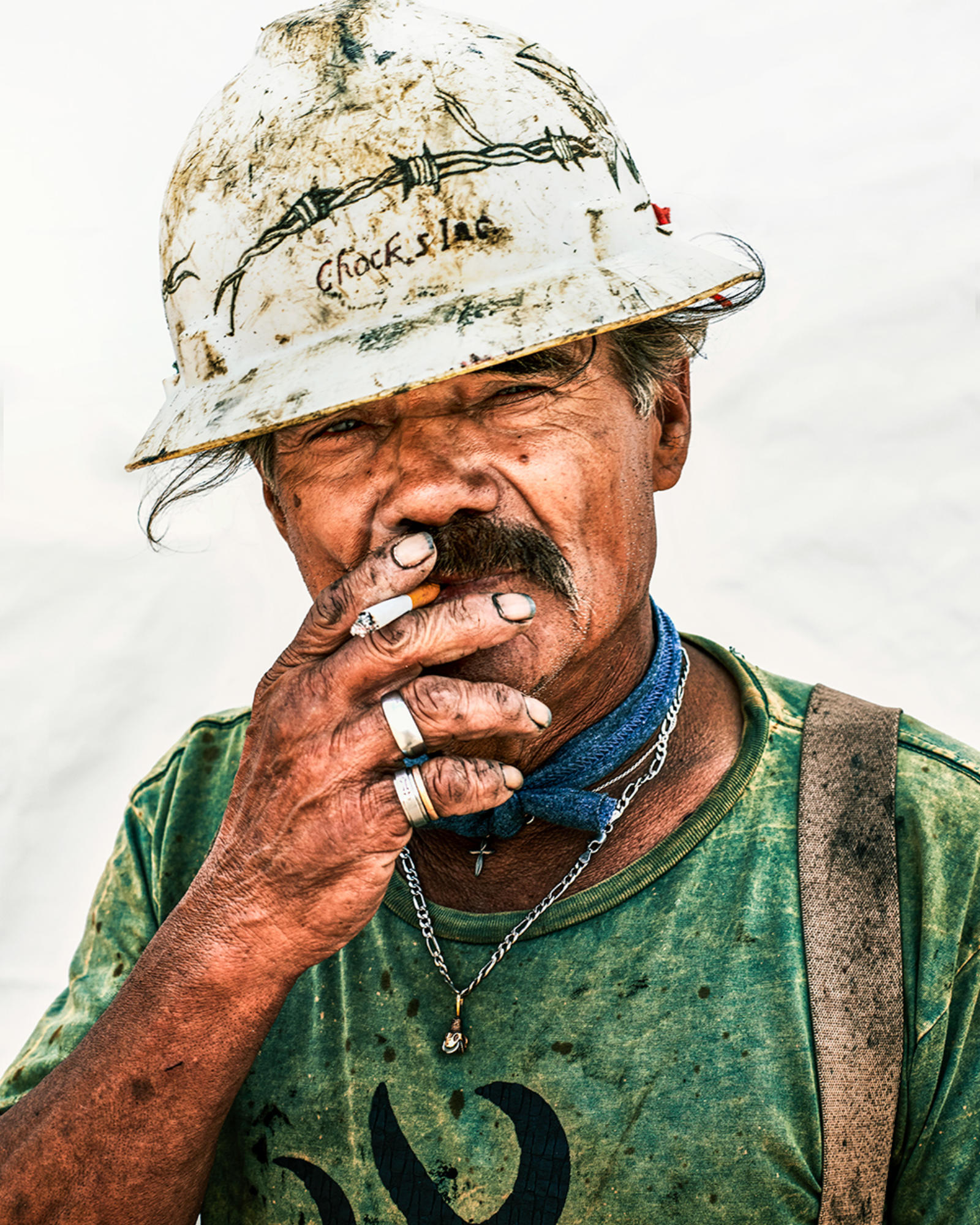
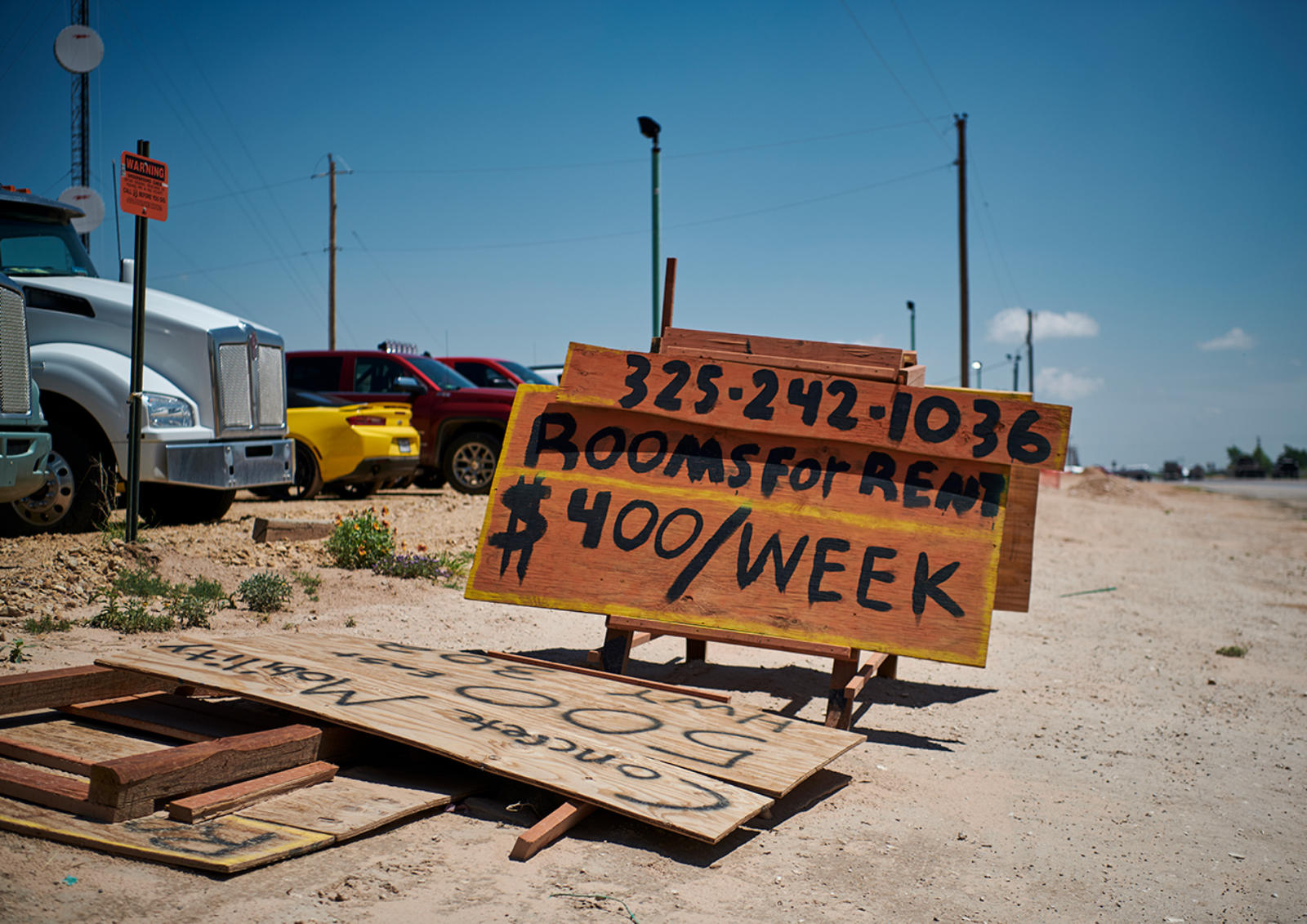


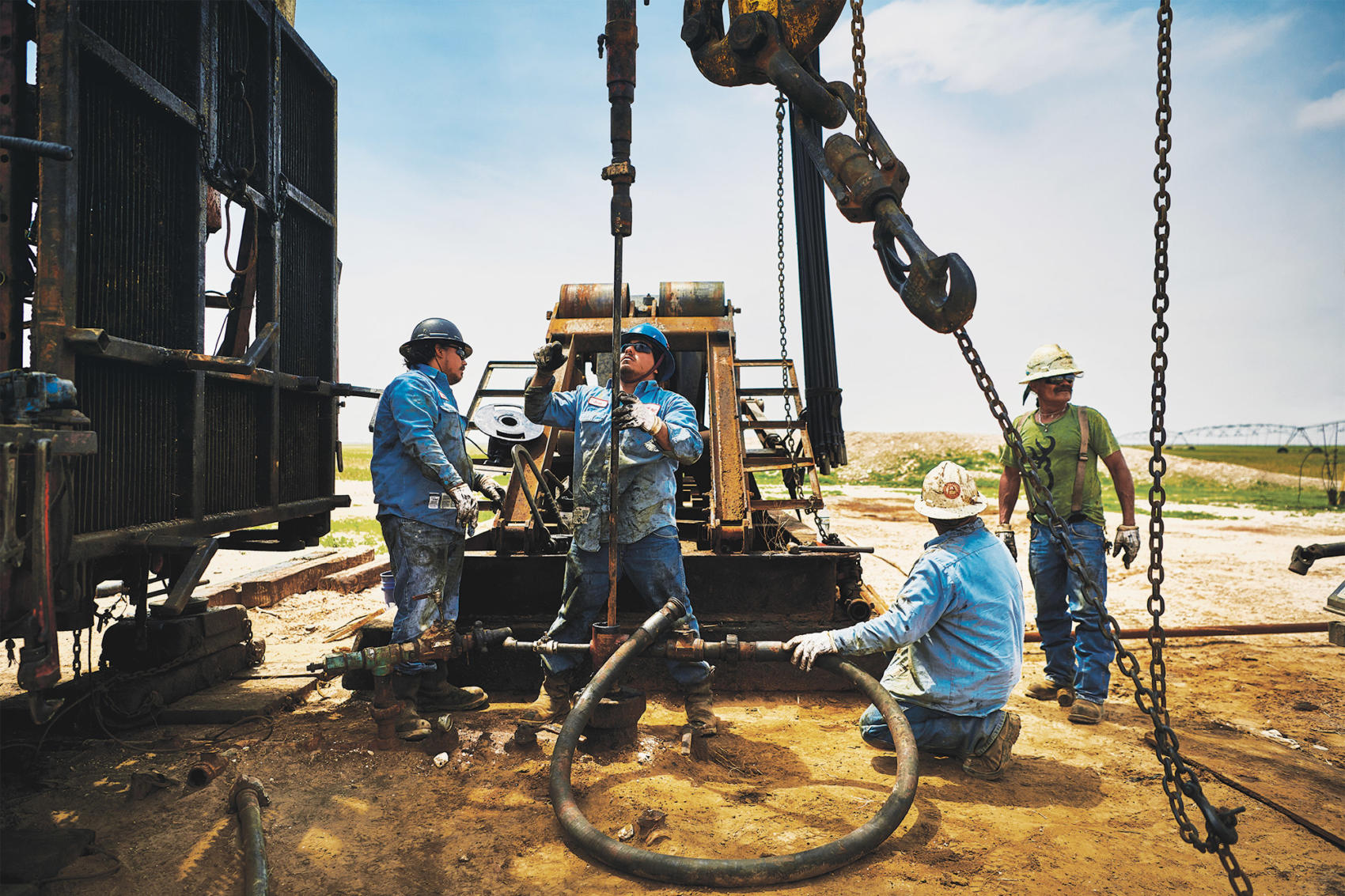
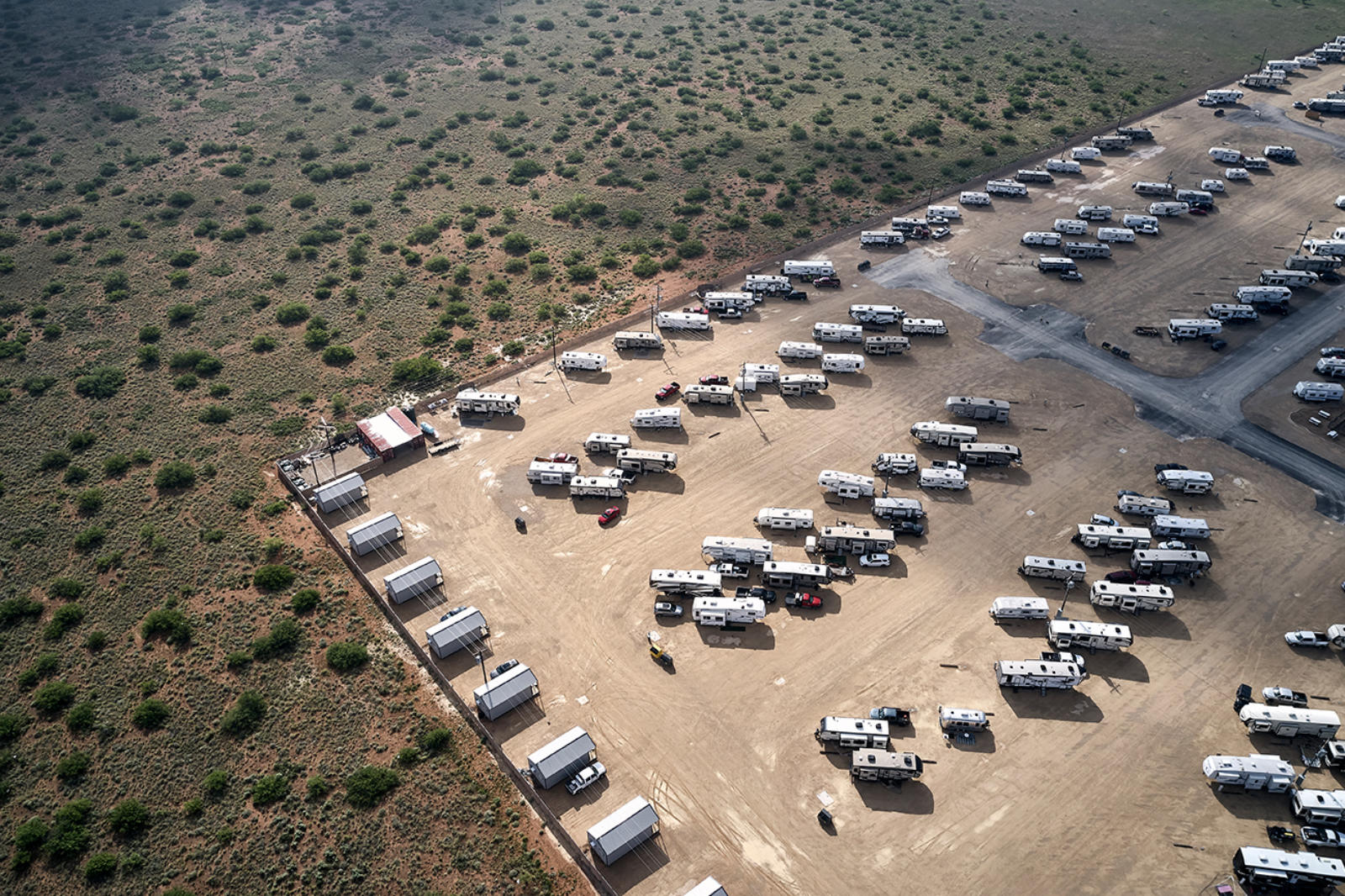
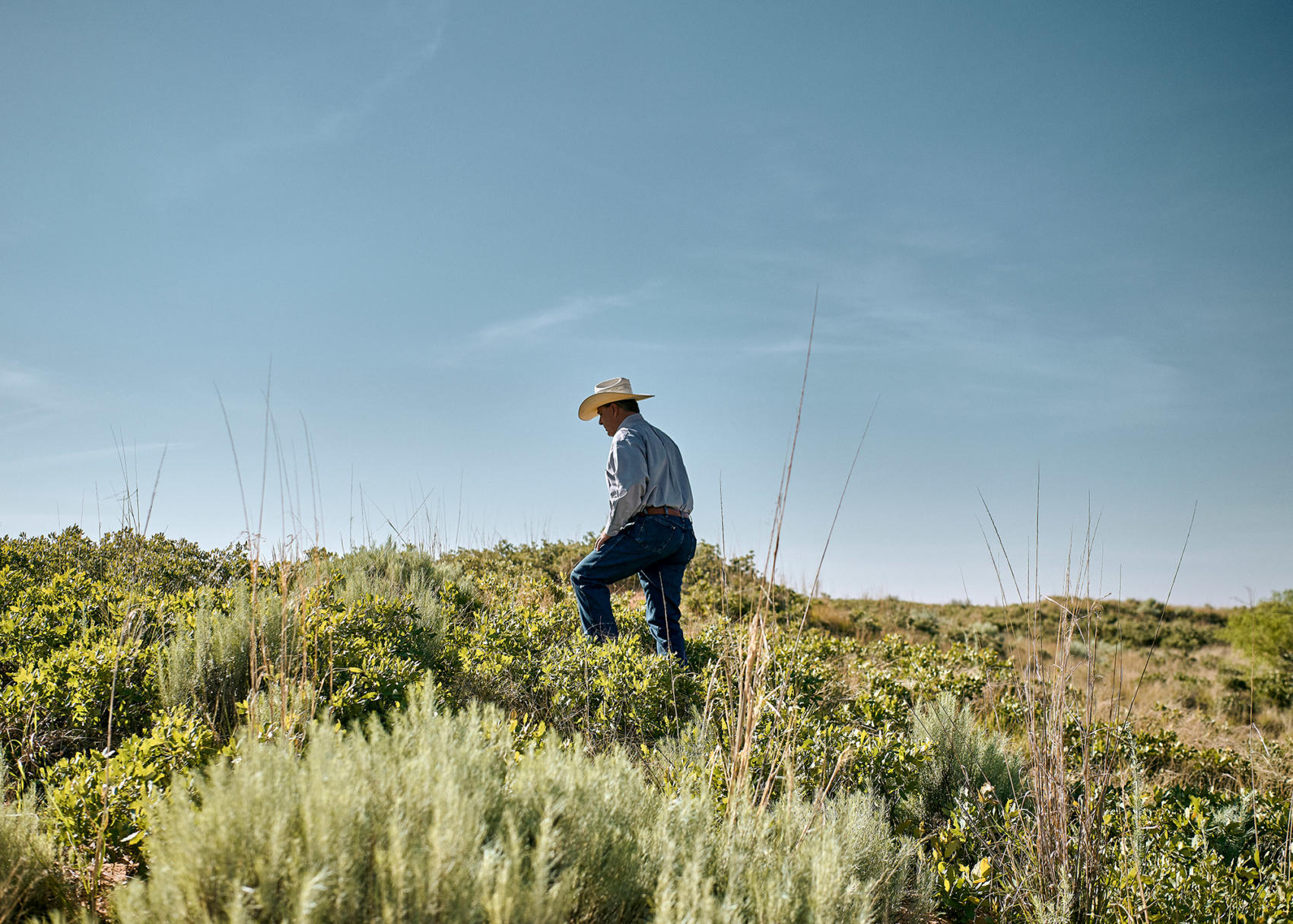
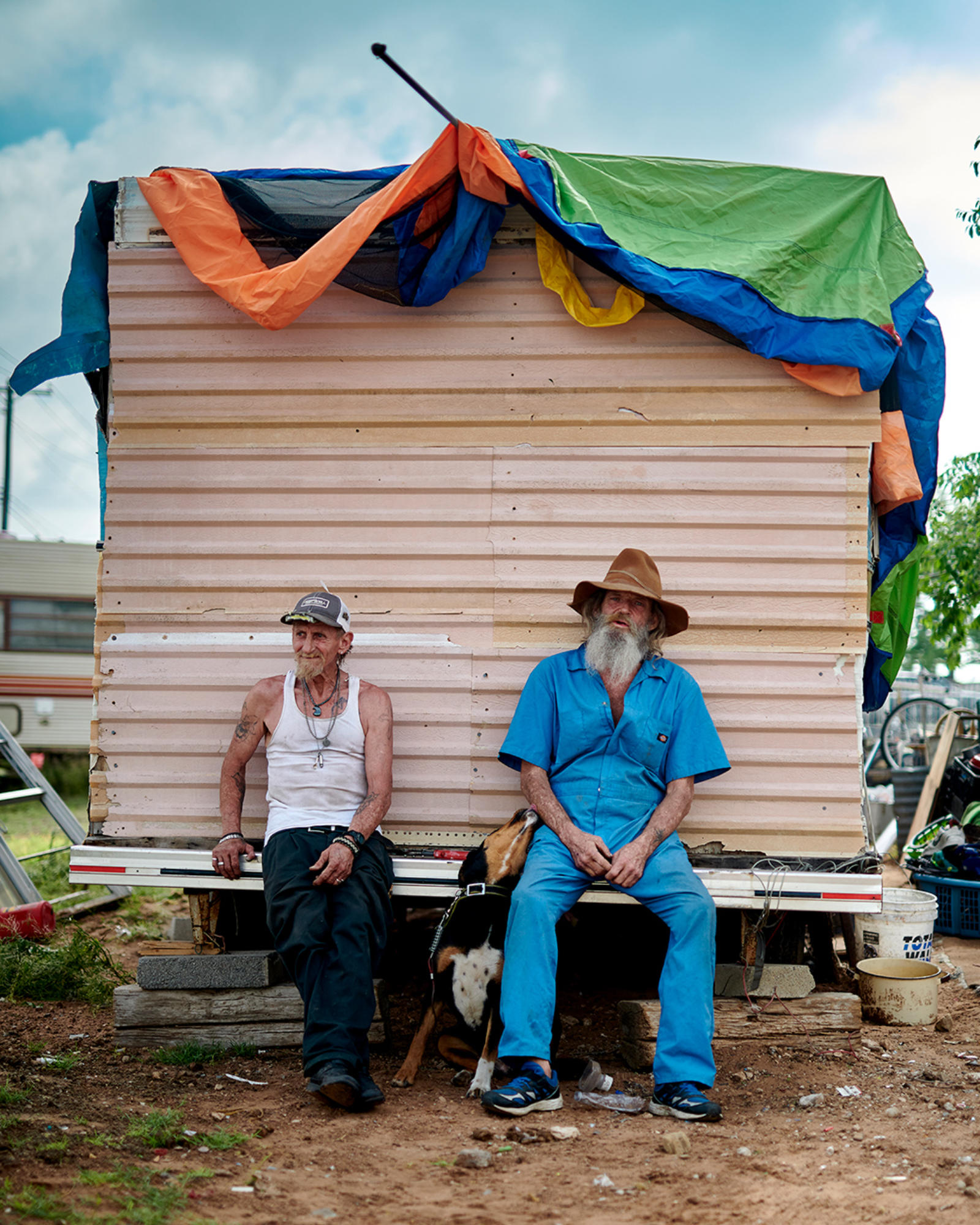
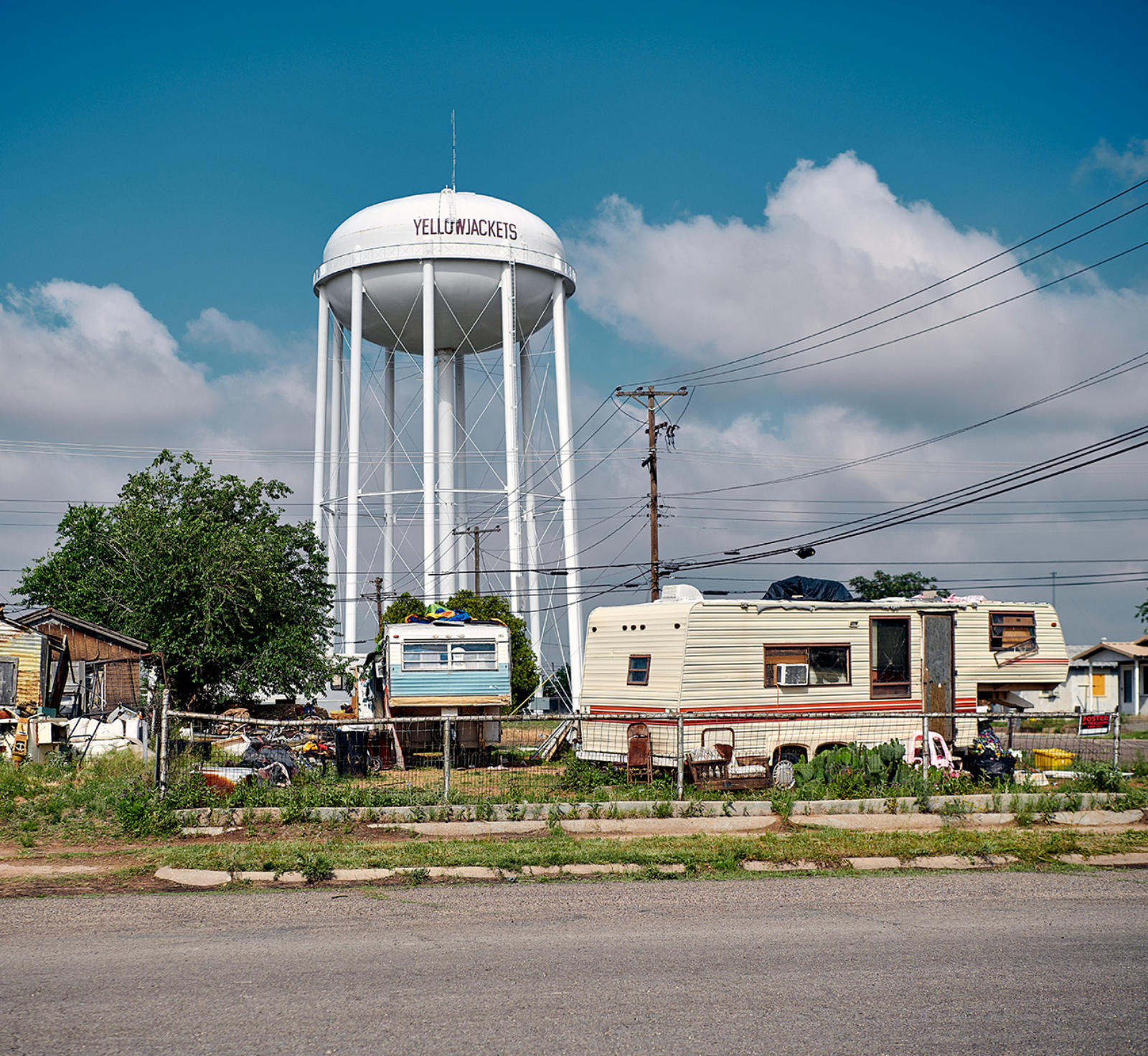
NEWS
Hide Full Index
Show Full Index
View All News